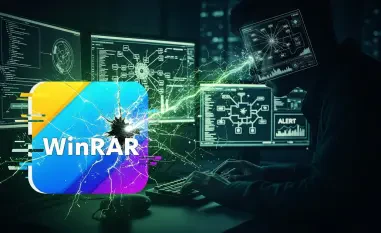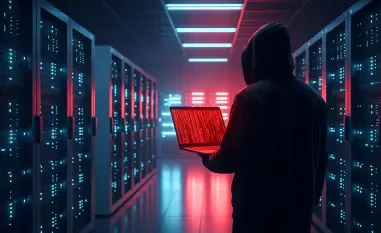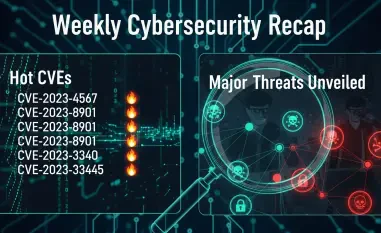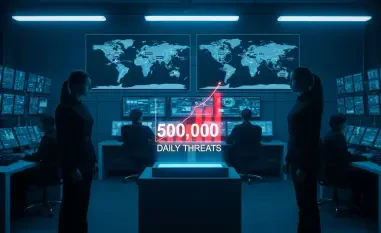In today’s digital age, cybersecurity threats are more sophisticated and prevalent than ever before. Akamai Technologies, a leader in global internet security, is at the forefront of defending against these threats. With a mission to protect up to 30% of global internet traffic, Akamai offers invaluable insights and strategies to help organizations bolster their cybersecurity defenses. This article delves into Akamai’s comprehensive approach to cybersecurity, providing practical guidance for enhancing your organization’s security posture.
Understanding Akamai’s Security-in-Depth Framework
Akamai’s security-in-depth framework is a multi-layered strategy designed to protect an organization’s data and systems through various controls and measures. This utilizes physical security, network security, application security, user access controls, and the application of analytics to uncover hidden threats. By implementing multiple layers of defense, organizations can create a robust security posture that is difficult for attackers to penetrate.
The framework emphasizes the importance of a holistic approach to cybersecurity. Rather than relying on a single line of defense, Akamai advocates for a combination of measures that work together to provide comprehensive protection. This includes everything from securing physical access to data centers to implementing advanced analytics that can detect and respond to threats in real-time.
A key component of the security-in-depth framework is the use of analytics to assess the effectiveness of defenses. By continuously monitoring and analyzing security data, organizations can identify potential vulnerabilities and take proactive steps to mitigate them. This data-driven approach ensures that defenses are always up-to-date and capable of responding to the latest threats, thus maintaining a resilient and adaptive security posture over time.
The Importance of Risk Management
Risk management is a critical aspect of any cybersecurity strategy. Akamai emphasizes the need to identify, assess, and mitigate threats by evaluating their likelihood and potential impact. This process helps organizations prioritize their security efforts and allocate resources effectively to reduce vulnerabilities. Effective risk management begins with a thorough understanding of the organization’s assets and the potential threats they face. This involves conducting regular risk assessments to identify areas of weakness and determine the potential impact of different types of attacks.
By understanding the risks, organizations can develop targeted strategies to address them. Akamai’s approach to risk management also includes the use of risk scoring. This process involves assigning a numerical value to different risks based on their likelihood and potential impact. By quantifying risks, organizations can prioritize their security efforts and focus on the most critical areas. This ensures that resources are used efficiently and that the most significant threats are addressed first, maximizing the effectiveness of the cybersecurity strategy.
Enhancing Network Architecture
Akamai’s strategies for enhancing network architecture focus on creating multiple layers of defense to contain potential breaches. This involves implementing layered security measures that work together to protect the network from various types of attacks. By creating multiple barriers, organizations can make it more difficult for attackers to gain access to critical systems, thereby bolstering network security.
One of the key elements of Akamai’s network architecture strategy is network segmentation. This involves dividing the network into smaller segments, each with its own security controls. By isolating different parts of the network, organizations can limit the spread of an attack and protect critical systems from being compromised. Another important aspect of network architecture is the use of secure communication protocols. Akamai recommends using protocols such as HTTPS and SSL/TLS to encrypt data in transit and protect it from interception.
This ensures that sensitive information remains secure even if it is transmitted over public networks. Encrypting data in transit not only protects against eavesdropping but also ensures data integrity, critical in maintaining trust and information confidentiality.
Strengthening Host Security
Host security is another crucial component of Akamai’s cybersecurity strategy. This involves protecting individual devices from unauthorized access and malware infiltration. By securing endpoints, organizations can prevent attackers from gaining a foothold in the network and spreading malware to other systems, enhancing overall network integrity. Akamai’s approach to host security includes the use of endpoint protection solutions that can detect and respond to threats in real-time. These solutions use advanced techniques such as machine learning and behavioral analysis to identify suspicious activity and block malicious actions.
By continuously monitoring endpoints, organizations can quickly detect and respond to threats before they can cause significant damage. In addition to endpoint protection, Akamai also emphasizes the importance of regular system updates and patch management. By keeping software and systems up-to-date, organizations can close security gaps and protect against known vulnerabilities. This proactive approach ensures that defenses are always current and capable of responding to the latest threats, thereby reducing potential exposure to vulnerabilities.
Addressing Emerging Threats
The cybersecurity landscape is constantly evolving, with new threats emerging all the time. Akamai’s strategies are designed to address these emerging threats and provide organizations with tools and knowledge they need to stay ahead of attackers. This includes staying informed about the latest threats and implementing proactive measures to protect against them. One of the emerging threats highlighted by Akamai is the use of artificial intelligence by attackers. AI-powered attacks are becoming more sophisticated and difficult to detect, making them a significant challenge for organizations.
Akamai recommends using advanced analytics and machine learning to detect and respond to these threats in real-time. Another emerging threat is the abuse of VPNs. While VPNs are essential for secure remote access, they can also present vulnerabilities if not properly managed. Akamai advises organizations to monitor VPN appliances for attacks and breaches, limit service account permissions, and implement best practices for VPN management. Combating these threats requires a dedicated and multifaceted approach, integrating both human expertise and automated systems.
Akamai also recommends ongoing education and training for cybersecurity teams, ensuring that they remain well-versed in the latest threat landscapes and the most effective defense mechanisms. By committing to continuous learning and proactive defense, organizations can better position themselves to defend against the evolving cyber threats arrayed against them.
Proactive and Reactive Responses
In the modern digital landscape, cybersecurity threats have become more advanced and widespread. Akamai Technologies, a global leader in internet security, is committed to combating these threats effectively. Their mission is ambitious—they aim to protect up to 30% of the world’s internet traffic. Akamai provides crucial insights and strategies to help organizations strengthen their cybersecurity measures. This article explores Akamai’s thorough approach to cybersecurity, offering practical advice and techniques for improving your organization’s security stance.
Akamai leverages cutting-edge technology and a vast global network to detect and mitigate a wide range of cyber threats, including DDoS attacks, malware, and data breaches. By continuously analyzing global internet traffic, Akamai can identify emerging threats in real-time and offer tailored solutions that fortify an organization’s defenses. Additionally, Akamai places a strong emphasis on educating businesses about best practices in cybersecurity, ensuring that they are well-prepared to face current and future challenges.













